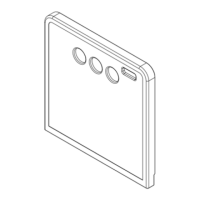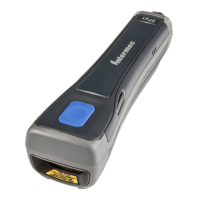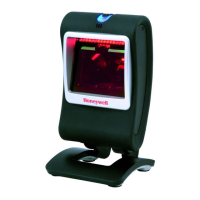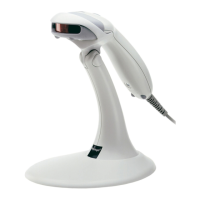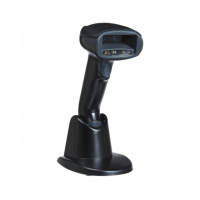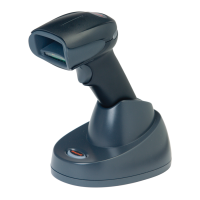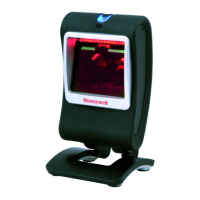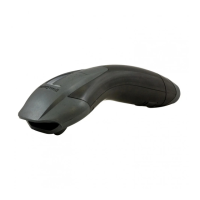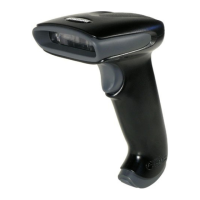58 Solaris 7980g User Guide
The sequence editor would use the same command line as shown in Output
Sequence Example 1 - Three Symbologies (page 56):
SEQBLK sequence editor start command
62 code identifier for Code 39
9999 code length that must match for Code 39, 9999 = all
lengths
43 start character match for Code 39, 43h = "C"
FF termination string for first code
6A code identifier for Code 128
9999 code length that must match for Code 128, 9999 = all
lengths
54 start character match for Code 128, 54h = “T”
FF termination string for first code
72 code identifier for PDF417
9999 code length that must match for PDF417, 9999 = all
lengths
4D start character match for PDF417, 4Dh = “M”
FF termination string for third code
But you would add your <> separators for each sequence:
SEQSEP99 separator for each sequence, 99 = all symbologies
3C left bracket (<)
3E right bracket (>)
And add the carriage return and line feed as a suffix:
SEQSUF99 separator for suffixes, 99 = all symbologies
0D carriage return
0A line feed
The whole command line would look like this:
SEQBLK62999943FF6A999954FF7299994DFFSEQSEP993C3ESEQSUF990D0
A
The data is output as:
<CODE39SMPL>
<TSTMSGCODE128>
<MSGPDF417>
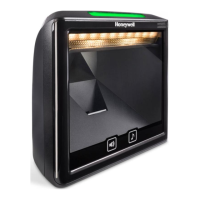
